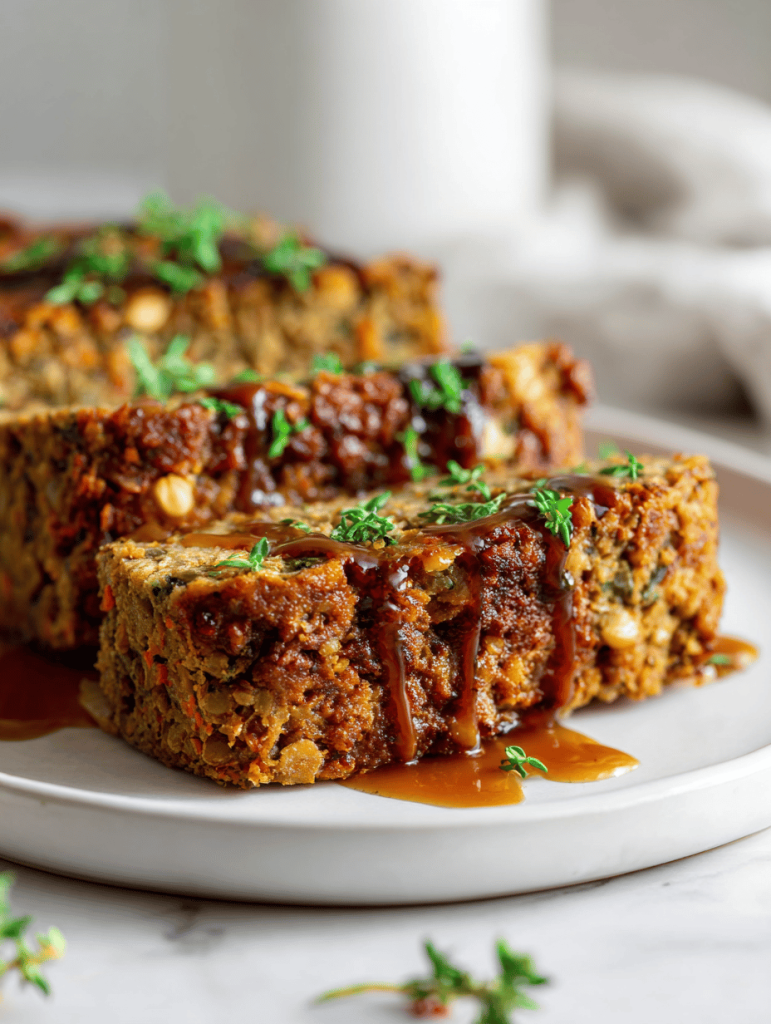For years, I’ve been sneaking roasted vegetables into holiday dinners—this year, I decided to go all-in and create a centerpiece that’s entirely plant-based but feels as indulgent as the classics. It’s a bit of a gamble, especially with the texture of a nut loaf, but the aroma alone is worth it. Plus, it’s the kind of dish that invites everyone to gather around, no matter their dietary choices.
Why I keep coming back to this veggie roast
Because it’s forgiving—every batch feels personal. The smell alone, caramelized and smoky, sparks holiday nostalgia. Plus, it’s endlessly adaptable—herbs, spices, toppings—every time I make it, I find a new way to love it.
Breakdown of the key ingredients and why they matter
- Walnuts:: Rich, earthy, and a bit oozy when freshly chopped. Swap with pecans if you prefer a sweeter note.
- Lentils:: Cooked until tender, they give the loaf structure and a hearty bite. Use canned for convenience or pre-cook dry lentils.
- Mushrooms:: Sautéed until smoky and juicy, they add umami and moisture. Shiitake or portobello work beautifully.
- Herbs:: Fresh thyme and sage bring seasonal warmth and complexity. Dried herbs can be used but lose vibrancy.
- Breadcrumbs:: Help bind everything together. Gluten-free or crushed oats are good substitutes.
- Olive oil:: A splash for roasting and brushing, adds richness and helps crisp the crust.
- Spices:: Smoked paprika and black pepper deepen flavor. Adjust to taste for heat or subtlety.
Tools of the trade for a perfect veggie roast
- Food processor: Chop and blend the nuts, mushrooms, and lentils into a coarse, cohesive mixture.
- Baking sheet: Hold the loaf during baking, ensuring it gets crispy on the outside.
- Pastry brush: Apply olive oil and herbs evenly for a golden crust.
- Cooling rack: Let the loaf rest without becoming soggy on the bottom.
Step-by-step to a hearty, flavor-packed veggie roast
Step 1: Preheat your oven to 180°C (350°F).
Step 2: Start by preparing the main centerpiece: a giant mushroom and nut loaf. Mix soaked walnuts, cooked lentils, and chopped mushrooms in a food processor until chunky but well combined.
Step 3: Shape the mixture into a loaf on a lined baking sheet. Brush with olive oil and sprinkle thyme and sage. Bake for 40-45 minutes, until the outside is golden and slightly crispy.
Step 4: While it bakes, prepare your gravy and side dishes. Let the loaf rest for 10 minutes after coming out of the oven to firm up.
Step 5: Slice and serve with your favorite seasonal vegetables and a drizzle of rich gravy.
Cooking checkpoints to keep you on track
- The loaf should be firm but not dry; it should hold together when sliced.
- The crust should be golden and slightly crisp, not burnt or soggy.
- Gravy should be thickened and velvety, not watery or lumpy.
Common pitfalls and how to fix them
- The loaf cracks open during baking.? Add a splash of water or broth if the mixture feels too dry.
- The crust isn’t golden enough.? Cover loosely with foil and bake for an extra 10 minutes.
- The loaf is too dense.? Increase oven temperature slightly or broil for 2 minutes—watch closely.
- It’s too salty.? Pulse fewer times to keep texture chunky, not pureed.
- Gravy is lumpy.? Rinse the lentils thoroughly to reduce saltiness.
- The flavor is flat.? Whisk vigorously and add a bit more stock to smooth it out.
- The loaf is too greasy.? Boost seasoning with a splash of soy or miso.
- It’s burnt on top.? Bake longer or use a paper towel-lined rack to absorb excess oil.
- The herbs burn.? Reduce oven temperature and cover loosely with foil to protect.
- The loaf is too crumbly.? Add herbs later or use a milder variety.
- The loaf sticks to the paper.? Chill the mixture for 15 minutes before shaping.
- The loaf lacks flavor.? Use a non-stick baking sheet or parchment paper.
- It’s too bland.? Add more herbs, smoked paprika, or a splash of soy sauce.
- The loaf is unevenly cooked.? Increase seasoning or serve with a flavorful sauce.
- It’s greasy.? Rotate the baking sheet halfway through.
- The loaf is dry.? Ensure the mixture isn’t too wet and bake on a rack to allow excess oil to drip off.
- It falls apart when sliced.? Serve with a moist gravy or sauce to compensate.
- The herbs burn.? Chill thoroughly and slice with a sharp knife.
- The loaf is underseasoned.? Add herbs later in the baking or sprinkle fresh on top after baking.
- The loaf is too dense.? Taste the mixture before baking and adjust salt or spices.
- It’s too oily.? Pulse less in the processor to keep some texture.
- The loaf is too moist inside.? Use less oil in the mixture and bake on a rack.
- It’s not hot enough to serve.? Bake longer or lower the oven temperature.
- It’s not festive enough.? Reheat gently in the oven at 150°C (300°F) until warmed through.
- The edges are burnt.? Decorate with fresh herbs or edible flowers before serving.
- The texture is off.? Reduce oven temperature or cover edges with foil.
- The loaf crumbles apart.? Adjust the cooking time or ingredients next time.
- It’s too salty.? Chill well before slicing to help it hold together.
- It’s too bland.? Rinse lentils and reduce added salt.
- The crust isn’t crispy enough.? Add more herbs, spices, or a splash of lemon juice.
- The flavor is off.? Bake a little longer or broil briefly.
- It sticks to the pan.? Balance with more herbs or a drizzle of balsamic.
- The loaf is unevenly cooked.? Use parchment paper or a non-stick spray.
- The loaf is greasy.? Rotate during baking and check for hot spots.
- It’s burnt on top.? Drain excess oil and bake on a rack.
- It’s not cooking evenly.? Lower oven temp or cover with foil.
- The loaf falls apart when sliced.? Adjust oven rack and baking time.
- It’s too dry.? Chill thoroughly and cut with a serrated knife.
- The flavor isn’t balanced.? Serve with a moist gravy or sauce.
- The texture is off.? Add a splash of lemon or vinegar.
- It’s too salty.? Pulse less in processor or hand-mix gently.
- It’s bland.? Use less salt or rinse ingredients thoroughly.
- It’s greasy.? Increase herbs or spices.
- It’s undercooked.? Reduce oil in the mixture.
- The edges burned.? Bake longer, lower temp.
- The loaf is too crumbly.? Cover with foil earlier.
- It’s not hot enough.? Chill before slicing.
- It’s not festive enough.? Reheat in the oven gently.
- The crust isn’t crispy.? Add decorative herbs or edible flowers before serving.
- It’s too dense.? Bake a bit longer or broil briefly.
- It falls apart.? Pulse less or add a binder like oats.
- It’s too salty.? Chill thoroughly before slicing.
- It’s bland.? Use less salt, rinse ingredients.
- The flavor is flat.? Add herbs, spices, or a squeeze of lemon.
- It’s greasy.? Balance with more herbs or acid.
- It’s unevenly cooked.? Drain excess oil and bake on a rack.
- The loaf is burnt.? Rotate baking sheet during cooking.
- It’s stuck to the pan.? Lower oven temp, cover with foil.
- It’s too dry.? Use parchment paper or non-stick spray.
- It’s not flavorful.? Serve with moist gravy or sauce.
- It’s too salty.? Add more herbs or spices.
- It’s bland.? Reduce salt, rinse ingredients.
- It’s too greasy.? Add more herbs or lemon.
- It’s underdone.? Reduce oil, bake on rack.
- Edges burned.? Bake longer, lower temperature.
- Crumbles when sliced.? Cover earlier or lower heat.
- It’s too dry.? Chill well, use sharp knife.
- Flavor is off.? Serve with moist sauce.
- Texture is off.? Adjust seasoning or add acid.
- Too salty.? Pulse less, hand-mix.
- Blandness.? Use less salt, rinse.
- Crust isn’t crispy.? Add herbs, spices, lemon.
- Too dense.? Bake longer or broil.
- Falling apart.? Pulse less or add binder.
- Too salty.? Chill before slicing.
- Bland.? Use less salt, rinse.
- Flat flavor.? Add herbs or lemon.
- Greasy.? Balance with herbs or acid.
- Uneven cooking.? Drain excess oil, use rack.
- Burnt.? Rotate during baking.
- Stuck.? Lower oven temp, cover.
- Dry.? Use parchment or spray.
- Lacking flavor.? Serve with moist sauce.
- Too salty.? Add herbs or spices.
- Bland.? Rinse ingredients, reduce salt.
- Flat.? Add herbs, lemon.
- Greasy.? Balance with acid.
- Uneven.? Drain oil, bake on rack.
- Burnt.? Rotate.
- Stuck.? Lower temp, cover.
- Dry.? Use parchment.
- Flavorless.? Moist sauce.
- Too salty.? Herbs or spices.
- Bland.? Rinse, reduce salt.
- Flat.? Herbs or lemon.
- Greasy.? Add acid.
- Uneven.? Drain, rack.
- Burnt.? Rotate.
- Stuck.? Lower temp, cover.
- Dry.? Parchment or spray.
- Lacking flavor.? Moist sauce.
- Too salty.? Herbs/spices.
- Bland.? Rinse, reduce salt.
- Flat.? Herbs, lemon.
- Greasy.? Add acid.
- Uneven.? Drain, rack.
- Burnt.? Rotate.
- Stuck.? Lower temp, cover.
- Dry.? Use parchment.
- Lacking flavor.? Serve with sauce.
- Too salty.? Add herbs/spices.
- Bland.? Rinse, reduce salt.
- Flat.? Herbs, lemon.
- Greasy.? Add acid.
- Uneven.? Drain, rack.
- Burnt.? Rotate.
- Stuck.? Lower temp, cover.
- Dry.? Use parchment.
- Lacking flavor.? Serve with sauce.
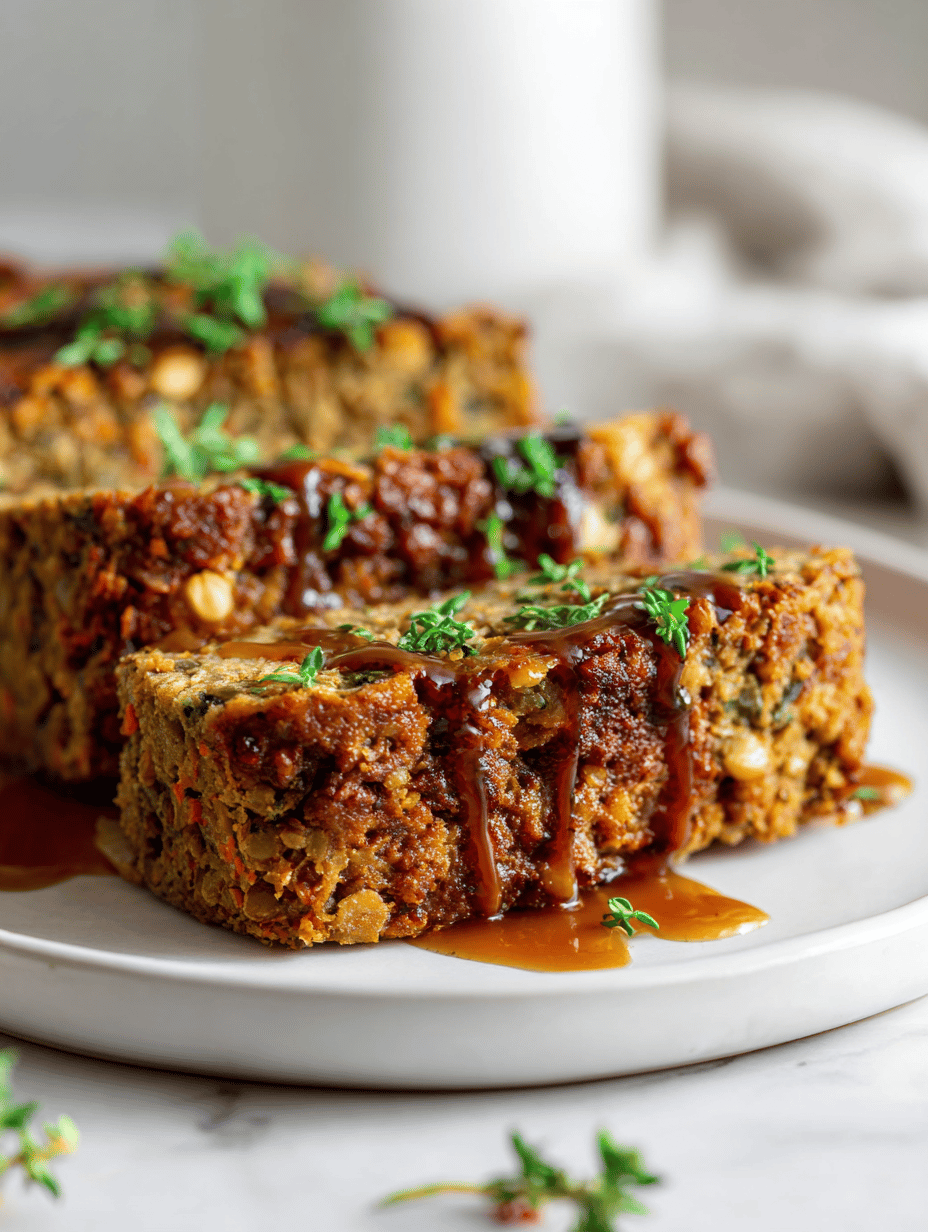
Vegan Nut and Lentil Loaf
Ingredients
Equipment
Method
- Preheat your oven to 180°C (350°F) and line a baking sheet with parchment paper.
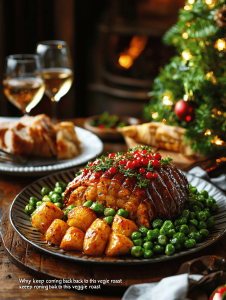
- In a food processor, pulse the soaked walnuts until coarsely chopped, with some texture remaining.

- Add cooked lentils and sautéed mushrooms to the processor and pulse until mixture is chunky but well combined.
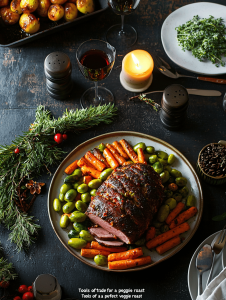
- Transfer the mixture to a mixing bowl, then stir in minced garlic, chopped thyme, sage, breadcrumbs, smoked paprika, black pepper, and a pinch of salt. Mix until evenly incorporated.
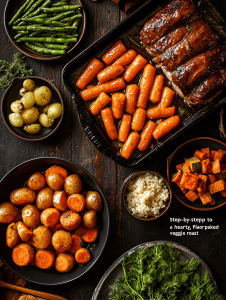
- Shape the mixture into a loaf shape on the prepared baking sheet, pressing gently to firm it up.
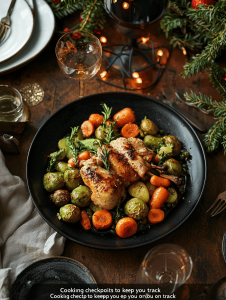
- Use a pastry brush to lightly coat the top and sides of the loaf with olive oil, which will help it crisp and brown nicely.

- Bake in the oven for 40-45 minutes, until the exterior is golden and slightly crispy, and the loaf feels firm to the touch.
- Once baked, remove the loaf from the oven and transfer it to a cooling rack. Let it rest for about 10 minutes to set, which makes slicing easier.
- Slice the loaf thickly and serve with your favorite seasonal vegetables and a generous drizzle of vegan gravy or sauce.

Hi, I’m Theo Granger, a former line cook and unapologetic flavor maximalist from New Orleans. I believe there are two types of people in this world: those who season their food, and those who LIVE to season their food. This blog is for the latter.
